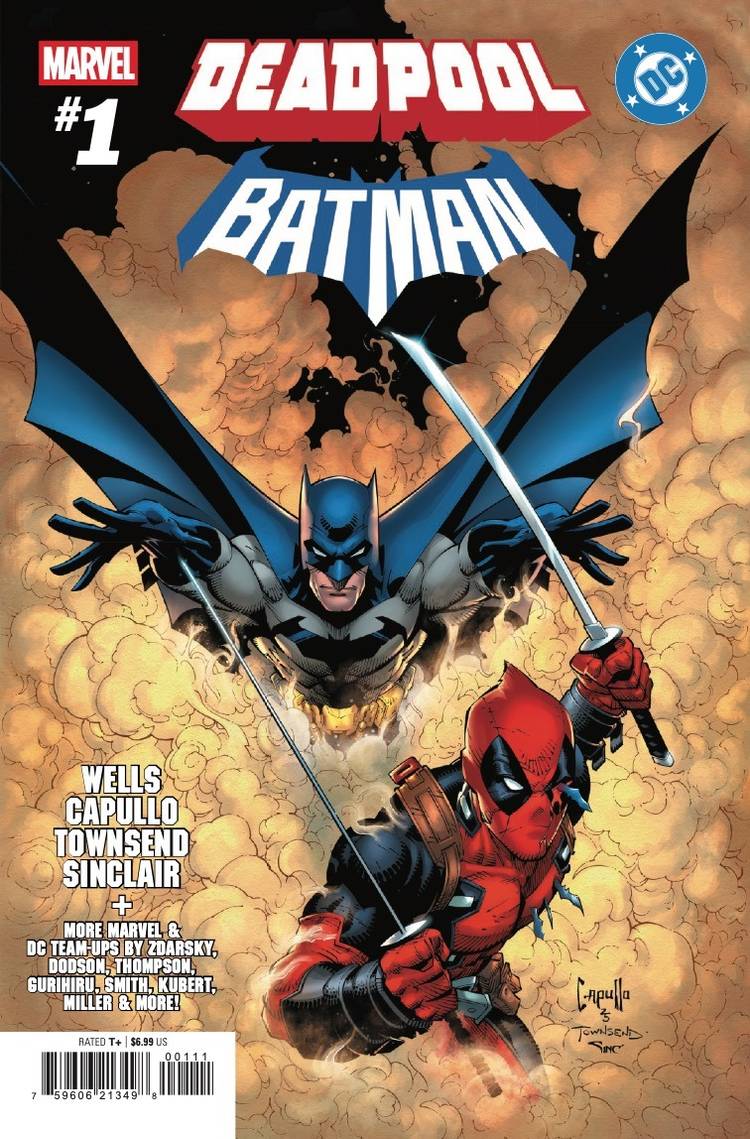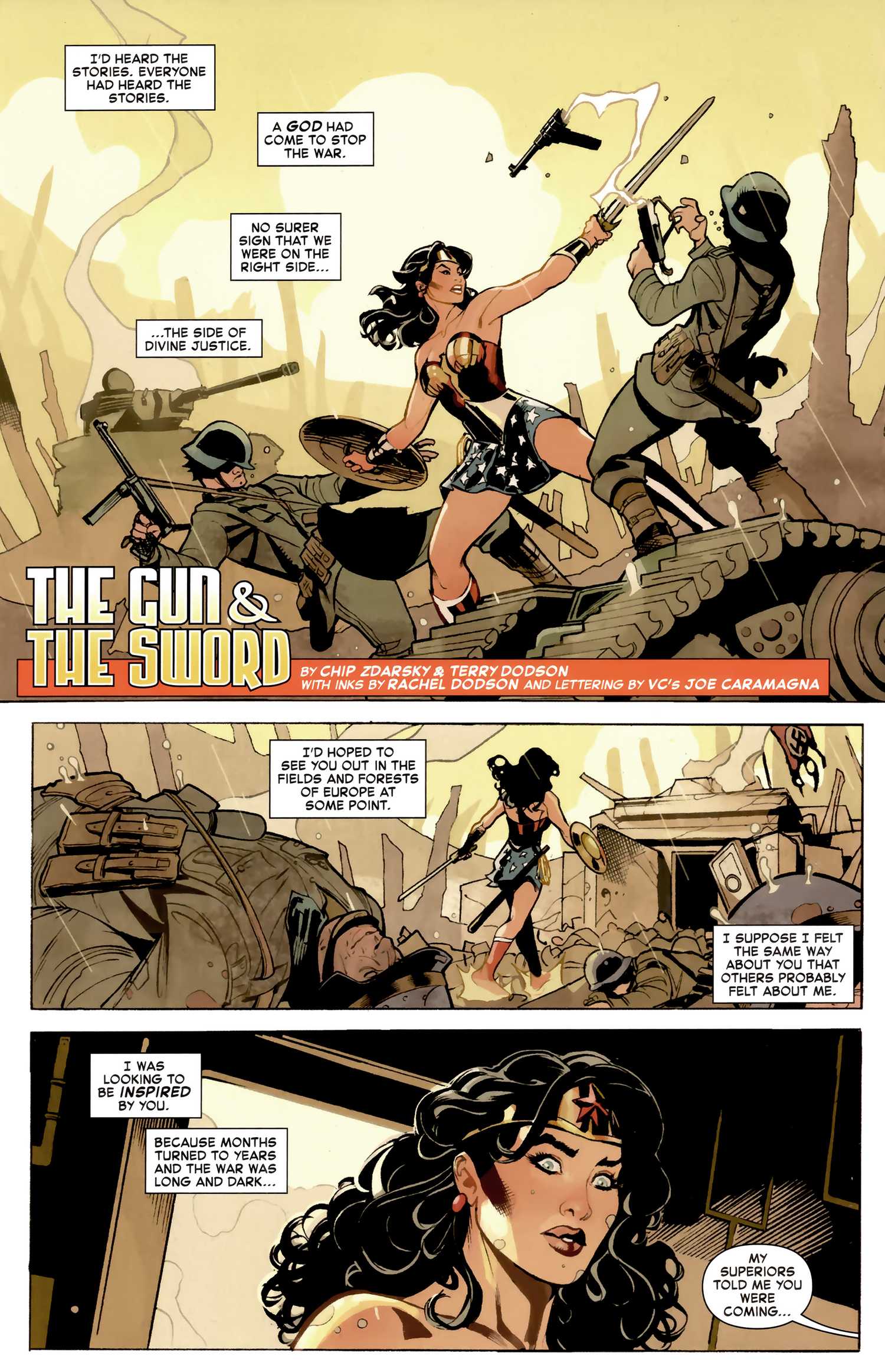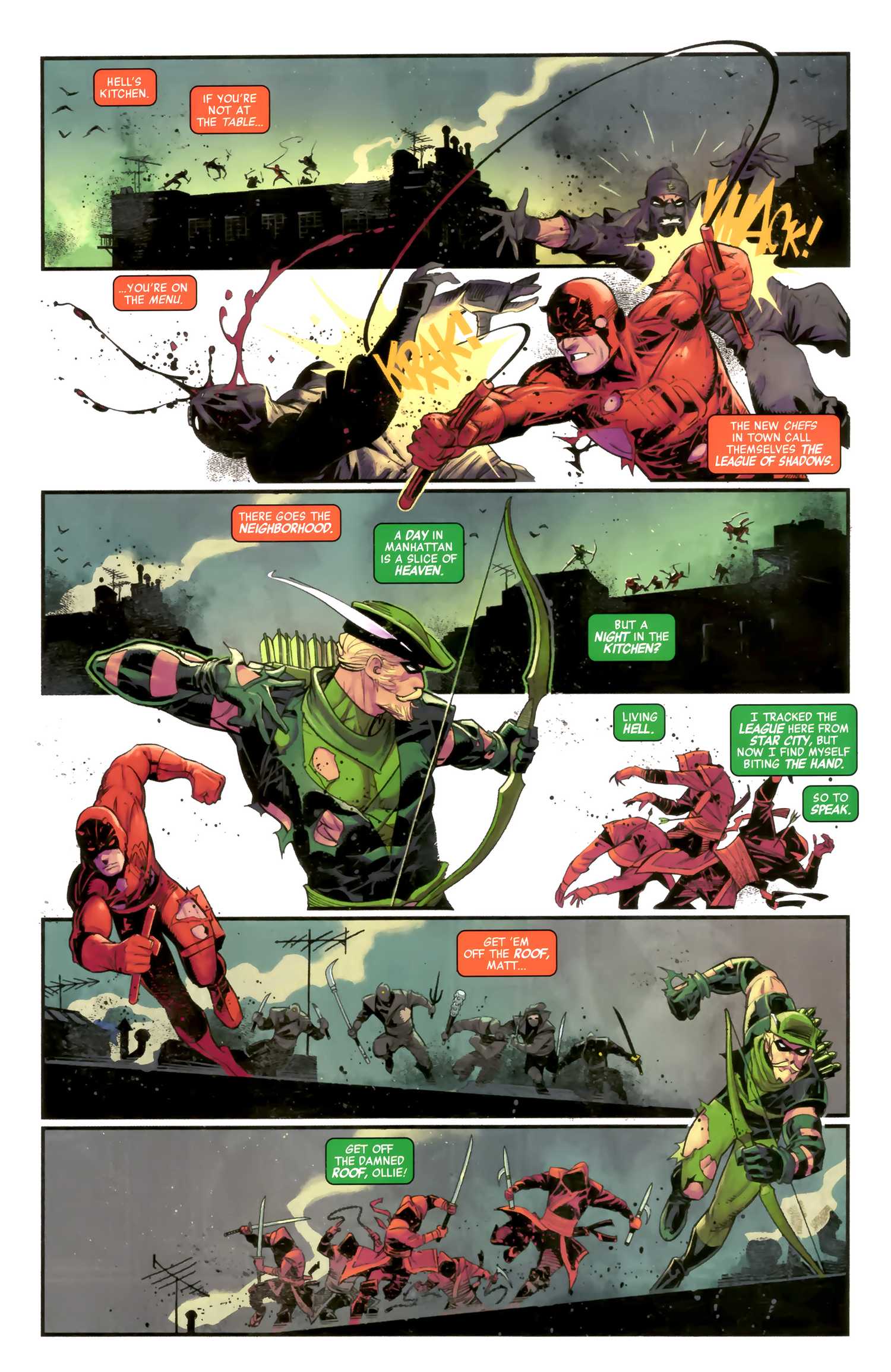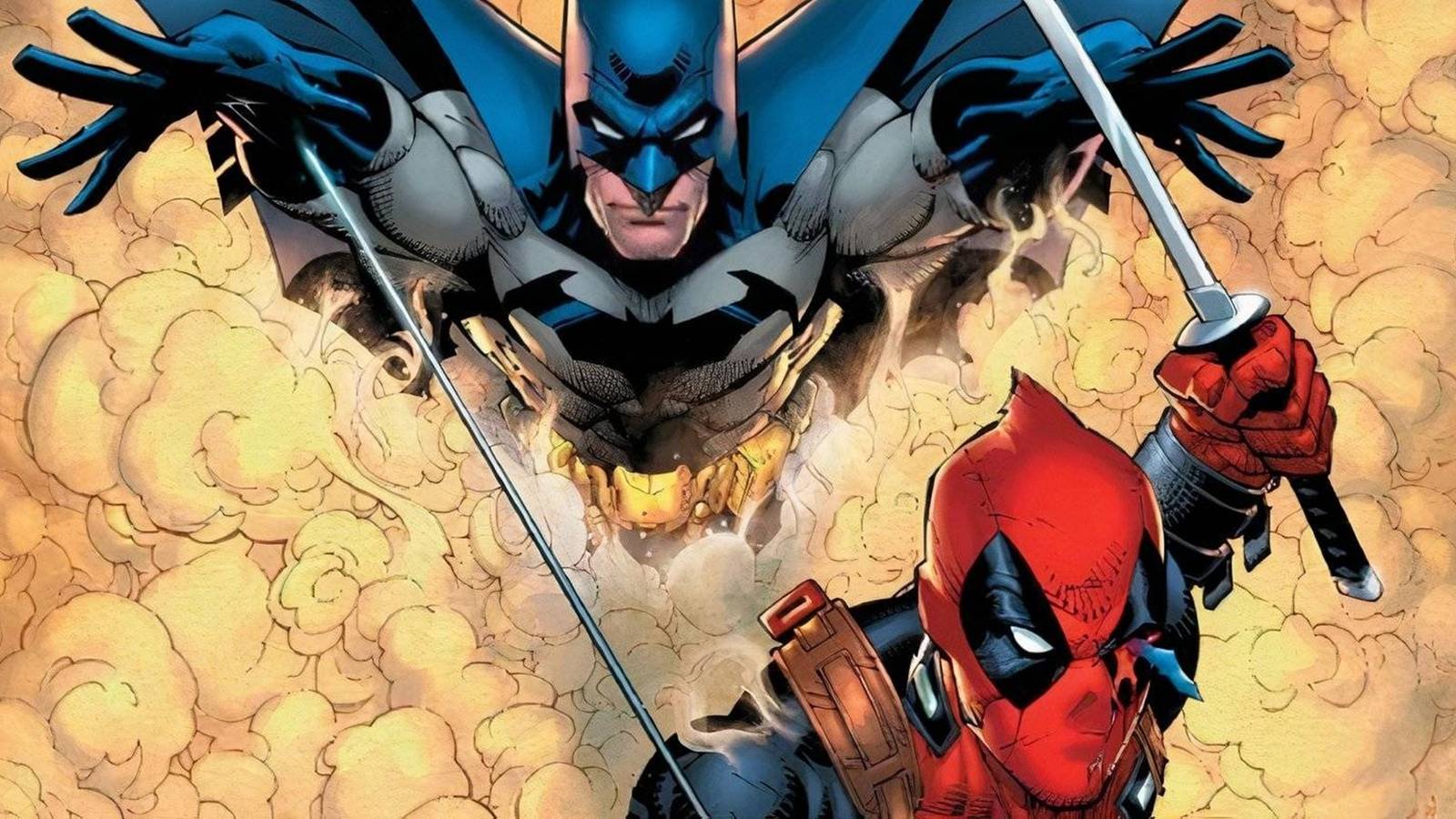The following contains spoilers for Deadpool/Batman #1, on sale now from Marvel and DC
If you’ve read anything I’ve written for a number of years, you’ll recall that something I harp on very often is the concept of the “second generation” of comic book writers. You see, the first generation of comic book writers, the people who effectively created the modern comic books, were all guys who grew up in the 1920s and 1930s. So their influences were very much of that generation, so mostly pulps and adventure comic strips from the newspapers. Then the second generation of comic book writers came about, the men and women who grew up in the 1950s and 1960s, and THEY grew up reading comic books. That matters a lot, as I have a whole feature called Always Kind of Wondered based on the idea that while the Jack Kirbys and the Mort Weisingers of the world had some pretty good guesses as to what their fans were curious about seeing in the comics, the Marv Wolfmans and Len Weins KNEW what they wanted to see, since they WERE comic book fans. Obviously, we’re now a number of generations removed from that second generation of comic book writers, but the important thing to remember is that every generation is clearly influenced by the previous generations. So, while the second generation was the one who got to write the first comic book crossovers between Marvel and DC (writers like Gerry Conway, Jim Shooter, Marv Wolfman, and Len Wein were behind the first Marvel and DC crossovers), the CURRENT generation of comic book writers grew up in a time when Marvel and DC had a long history of crossovers, and as a result, you get Deadpool/Batman #1, a book that is very much aware of its status as an inter-company crossover, but it embraces that to celebrate just how cool this is to see the companies cross over like this.

Deadpool/Batman #1 features a lead story by writer Zeb Wells, penciler Greg Capullo, inker Tim Townsend, colorist Alex Sinclair, and letterer Clayton Cowles. There are also back-up stories by writer Chip Zdarsky, pencilier/colorist Terry Dodson, inker Rachel Dodson, and letterer Joe Caramagna (Captain America/Wonder Woman), writer Kelly Thompson, artists Gurihiru, and letterer Caramagna (Jeff/Krypto), writer Kevin Smith, artist Adam Kubert, colorist Frank Martin, and letterer Caramgna (Daredevil/Green Arrow), writer Al Ewing, artist Dike Ruan, colorist Moreno Dinisio, and letterer Joe Carmagna (Rocket Raccoon/Green Lantern), writer/artist Frank Miller, colorist Sinclair, and letterer Carmagna (Old Man Logan/Dark Knight Returns Batman ), and finally, writer Ryan North, artist Ryan Stegman, colorist Martin, and letterer Caramagna (Logo). The whole thing is just a blast.
What was the lead Deadpool/Batman story about?
In the main story, Deadpool is brought to the DC dimension via some magic, and the Joker hires him to kill Batman. Deadpool was not initially intended to be a fourth-wall breaking villain, but obviously he has become one over the years, and so Deadpool’s metafictional nature allows Zeb Wells to have a lot of fun with the concept of a comic book crossover. Like I noted, Wells grew up with inter-company crossovers being normal things, and as a result, this is very much a crossover that exists in REACTION to crossovers.
It is sort of a deconstructionist crossover, but at the same time, Wells gets to hit all of the main marks of a traditional crossover while also using Deadpool to serve commentary on the absurdity of the whole situation.
Capullo was one of the earliest comic book artists to draw Deadpool back when Capullo was the artist on X-Force, and he had an iconic run on Batman with Scott Snyder, where the Joker was a particularly major part of the book, so clearly, Capullo is well-suited to this book. He absolutely NAILS the Joker, but he also keeps the action flowing well.
Capullo is the guy you want for BIG and BOLD pages, and Wells uses that skill of Capullo well in this story. The most clever aspect of the story is Wells having Batman play the Joker against Deadpool by “complimenting” Deadpool on being the craziest person he’s ever encountered, which, of course, drives the Joker wild (pun unintended, I promise). John Byrne probably had the best use of the Joker’s venom in a comic book crossover ever, but Wells and Capullo do a great job with it here, as well.
What were the backups about?
The highlight of the entire issue is the Captain America/Wonder Woman team-up by Chip Zdarsky, Terry Dodson, Rachel Dodson, and Joe Caramagna, where Zdarsky imagines a world where Captain America and Wonder Woman have shared a universe since World War II, and thus have gone on many different adventures over the years.

Image via DC/Marvel
Zdarsky cleverly not only reimagines the DC and Marvel Universes merged together, but he does it with plenty of well-earned pathos. The Dodsons had to come up with a number of clever re-designs of characters to mark the evolution of this shared universe, and they do an excellent job with it all.
After the Zdarsky story, most of the other stories were more on the cute side than anything, but there’s nothing wrong with that. Jeff and Krypto playing basically a super-powered version of dodgeball is ADORABLE.
The Kevin Smith/Adam Kubert Daredevil/Green Arrow story is essentially a long joke setup, but hey, it’s a really good gag, and holy crap, is Adam Kubert an amazing comic book artist…

Image via DC/Marvel
Then you get the stories that are so short that they are basically just quick joke deliveries (like the cute story of how Rocket Racoon and Hal Jordan would handle their respective universes REALLY poorly, or the introduction of a brand-new Amalgam character in Logo, a combination of Lobo and Wolverine) or just fun pages of a master cutting loose on a fun fight (Frank Miller going all out on a Dark Knight Returns Batman versus Old Man Logan story). The main name of the game in this one-shot was FUN, and the whole thing really was a delightful blast.
Source: Marvel and DC

